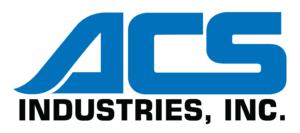- Technology
- Membrane Type
- Solution Type
- Current Density
- Purity
- Electrolysis of Seawater
- Component Cost
- Longevity
- Start-Up Time
- Technology Origin
- Ease of Transport
- PEM Electrolyzer
- Uses a solid proton exchange membrane.
- Acidic
- Typically lower, resulting in less hydrogen per unit of electricity.
- Up to 99.999%, suitable for fuel cell applications.
- More efficient due to membrane design and lower operating temperature.
- Higher – often requires platinum-group metal coatings.
- Approximately 40,000 operational hours.
- Rapid – reaches operating speed in under 5 minutes.
- Developed by NASA in the 1960s for space applications.
- More compact and easier to ship or replace despite higher part cost.
- Alkaline Electrolyzer
- Uses a porous ion-exchange diaphragm.
- Basic (alkaline)
- Typically higher, enabling more hydrogen production per unit of electricity.
- Slightly lower purity compared to PEM.
- Less efficient with seawater due to higher temps and more permeable membranes.
- Lower – does not require precious metal coatings.
- Can reach 90,000 operational hours.
- Slower – up to 50 minutes unless using pressurized systems.
- Oldest electrolysis method, originating in early 1800s.
- Bulkier, making shipping and maintenance more costly despite lower part cost.
Choosing the Right Electrolyzer for Your Needs
Selecting between a PEM vs alkaline electrolyzer depends heavily on your specific application requirement. Each technology offers distinct advantages based on performance, cost, and operational conditions.
When to choose PEM:
- High-purity hydrogen production: ideal for fuel cell vehicles and electronics.
- Rapid startup and shutdown: well-suited for pairing with intermittent renewable energy sources like solar and wind.
- Compact system needs: preferred in mobile, space-constrained, or decentralized applications.
When to choose alkaline:
- Large-scale, continuous hydrogen generation: efficient for industrial processes and central production plants.
- Cost-sensitive operations: offers a lower capital and operational cost per kilogram of hydrogen.
- Simpler supply chains and long service life: components are more widely available and systems often last longer.
Understanding the technical difference between PEM and alkaline systems is a critical step, but selection also comes down to how those characteristics match your production goals. If you are evaluating which system is right for your operation, our team is here to help you weigh the options and recommend material solutions that support your project goals. Reach out to discuss your applications needs.
Partnering with ACS for Advanced Electrolyzer Solutions
No matter which hydrogen production path you choose, PEM or alkaline, ACS has the experience and material expertise to support your system’s success. With a deep understanding of both technologies and a commitment to performance-driven solutions, we work alongside OEMs and system developers to meet the demands of emerging hydrogen applications. From anodes and cell components to stack hardware and assemblies of PEM, alkaline and solid oxide electrolyzers, our advanced components are built to help you operate efficiently. Contact us or fill out the form and a member of our team will be in touch shortly.


